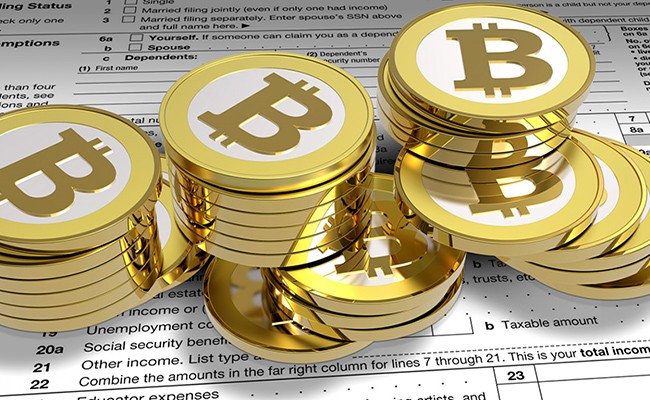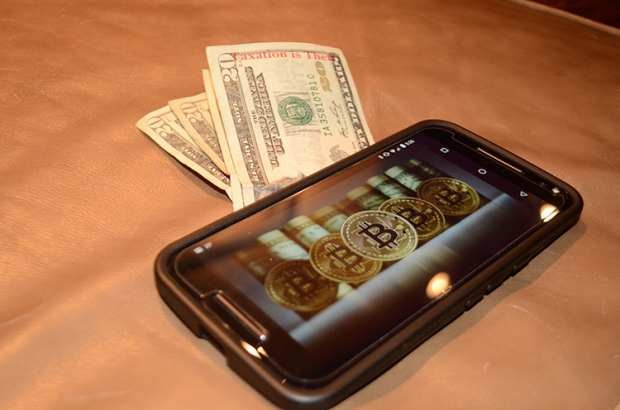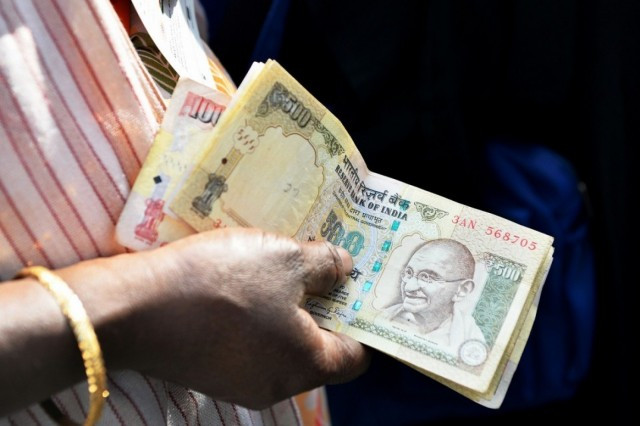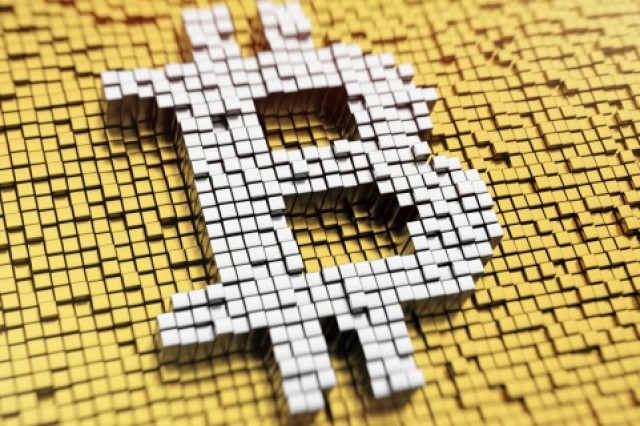According to the writings of Herodotus, we have evidence of the existence of coins at least from the 6th century BC. although barter also allowed exchanges, it required a series of conditions that made it impossible to exchange whatever product at whatever time. Well, because buyer and seller did not establish contact, the moment in which the exchange was desired was not the same for both parties or the goods that they wanted to exchange were not those that the other party was willing to accept (there was no double coincidence of needs).

These problems disappeared with the appearance of money, since the exchange occurs indirectly. It is the goods that were most used with the medium of exchange in barter that give rise to the emergence of money, since it was easier to use them again in another exchange. Thus, the key to avoiding the difficulties of barter is that the goods through which the indirect exchange takes place is useful for future exchanges, which ultimately means that it is in widespread use. In short, that everyone accepts it as a mechanism of exchange. This explains why wheat, salt, livestock, cocoa beans, mollusc skeletons, pieces of metal, precious metals, coral, and so on have been used as money.
The acceptance of goods as a means of payment occurs naturally, as a transaction that avoids the difficulties of barter, but the Public Sector can reinforce -once generalised- the means of payment as an exchange mechanism, and even use it to implement monetary politics. Gold was the first goods that were widely accepted as a means of payment and remained so until the twentieth century, because its characteristics made it suitable for such ends. On one hand, it is a scarce commodity, which determines its value. On the other, it is easily identifiable, difficult to falsify, divisible without complication and its value does not decrease with division.
Increasing the amount of money in circulation does not generate an increase in wealth
In addition, gold does not deteriorate over time and therefore constitutes an element of deposit or ideal. The insecurity of carrying gold, together with its weight which causes difficulty in its transport, led to the emergence of deposit banks, which, in return for a fee, kept it safe and available for the when its owner wanted to use it. To record that the metal was deposited there in the name of its owner, certificates of deposit arose, which began to be used, in turn, as means of payment.
The key to avoiding the difficulties of barter is that the goods through which the indirect exchange takes place is useful for future exchanges, which ultimately means that it is in widespread use. Inflation is always a monetary phenomenon, which can only be produced by a faster increase in the amount of money in circulation than in goods being produced
When these became bearer certificates, they acquired the characteristic of being interchangeable, giving rise to bank notes. Every note had to be backed up by the gold the bank held, and issuing more notes than gold on deposit implied fraud. Fixing the amounts of gold for which each currency could be exchanged established the gold standard, which was based on the fact that the fraudulent issuance of banknotes would cause customers to transfer their gold to another bank to be guarded.
One of the fundamental advantages of the gold standard lies in the correspondence between the metal in custody and the money in circulation, which gives rise to periods in which inflation is the exception, with stability and sustained growth in resources saved rather than in the money created from a monetary expansion. As Milton Friedman put it, "the increase in the amount of money in circulation does not generate an increase in wealth, rather a loss of the purchasing power of each unit of that money to re-establish the balance in real prices... inflation is always a monetary phenomenon, which can only be produced by a faster increase in the amount of money in circulation than in goods being produced."
In the 1970s, central banks took over a monopoly on the custody of gold, and in addition, custody was no longer demanded by the general public, rather by other central banks. They also acquired the ability to issue notes (certificates of deposit) for an amount greater than gold in custody. This monetary expansion entails an increase in money circulation and, in the medium term, a loss of purchasing power, which translates into inflation. This system originated in Bretton Woods in 1944 when each dollar was required to be exchanged for 35 ounces of gold and for equivalent amounts in other currencies. What happened was that maintaining convertibility did not prevent the issuance of new notes, which created a volume of dollars not backed by being able to demand gold, which, in turn, held a larger volume of other currencies. After successive inflationary periods, in 1971 President Nixon broke up dollar/gold convertibility and the money era without real or fiduciary support began.
In principle, this absence of convertibility should have caused the system to collapse, since dollars and any other currency became not worth the paper they were printed on, but the system continued to function and the key to this continuity was that the only condition for a good becoming a payment mechanism (money) is for it to be widely accepted as such.
The fact that the use of Bitcoin occurs anonymously is positively valued by those who wish to maintain privacy, and facilitates the payment of illegal activities
Advantages and disadvantages of a decentralised currency
As discussed in previous chapters, the Bitcoin system is not centralized on any server, but the operations are distributed repeatedly on each of the users' computers. Its creator, Satoshi Nakamoto, is not the one who organizes the system, since all he did was to create the public domain computer protocol. There is no-one to manage it and the code is completely transparent. In addition, the volume of existing BTCs and the quantity that has been transferred is known, since it is not possible to identify the users. This information is only known to the latter through a private key, which means that it is not known who uses them or why. Finally, the money supply is not controlled by any State, so the privileges of those who issue it are lost.
This situation has advantages and disadvantages. The main advantage of the State being unable to issue currency is that inflation would not be generated by issuance. That is, there is no possibility of issuing new money to increase the issuer's income, thus reducing the value of the currency in circulation. In return, there are those in favour of a system of monopoly issuance by the States, which can use it as a monetary policy tool.
The fact that the use of Bitcoin occurs anonymously is positively valued by those who wish to maintain privacy, and facilitates the payment of illegal activities, such as trafficking in arms, people, organs, gambling, kidnapping or drugs. In addition, the anonymity with which the transactions take place could favour other types of illegal activities, even if less serious than the previously-mentioned ones, such as promoting the submerged economy. On the other hand, as there is no need to provide credit card numbers for operations, credit card fraud would be avoided. This opacity would also make it difficult to collect taxes on certain transactions.
Bitcoin and the Austrian School of Economics
The Austrian School of Economics or School of Vienna was founded in the late nineteenth century, and its thinking has been disseminated much less than other contemporary schools and also had its origin in the development of the concept of diminishing marginal utility, such as the Austrian Carl Menger, the French Léon Walras and the British W. Stanley Jevons.

This School defends an individualistic methodological approach (Praxeology) for the Economy and, according to which, economic phenomena are the result of the unpredictable and irregular behaviour of individuals, which prevent the use of traditional methods of natural science.
The most outstanding thinkers of the School were Carl Menger, Eugen von Böhm-Bawerk and Friedrich von Wieser. These three economists became the so-called "first wave" of the Austrian School. Already in the twentieth century, it is divided into two streams. Their most prominent representatives are Ludwig von Mises, against neoclassical methodology, and their disciple Friedrich Hayek, who does accept a large part of it.
Theory of the economic cycle
This School proposes an explanatory theory of economic cycles alternative to orthodox theories. The Austrians considered that the key explanation of the cycles in the economy was in the excessive expansion of the credit granted by the banks to entrepreneurs and individuals. This concession makes it appear that the funds saved have been increased, when in fact they have not, thus precipitating a decrease in the interest rate. By increasing the availability of funds, entrepreneurs invest in longer production processes by raising the price of capital goods. Then there is a shift from the demand for consumer goods to those of investment. The Austrian School argues that this change should be reversed because it is unsustainable and that the more it is maintained over time, the more perturbing the process of readjustment will be.
The reason why entrepreneurs invest in longer-term processes lies in the reduction of the interest rate (artificially created by excessive credit). The latter is used to calculate the present value of future elements, marking the preference for the present. For example, if we were to choose between 100 currency units today or tomorrow, we would prefer them today. Now, if the choice were between today and in 10 years, today's value of 100 units that will be received in 10 years would be much lower than if we could recover them tomorrow. Therefore, the interest rate marks how we "discount" or calculate the present value of future income or property and the preference for the present.
The higher the interest rate, the lower the value, to date, of an element to be perceived in the future and vice versa: a lower interest rate implies a higher present value. We might think that it is the same for us to perceive an amount today or tomorrow. Today's value of the amount we will receive tomorrow is the same value and the discount rate is zero. In contrast, the more we value the rent today or the lower the value we assign to the future, the higher the interest rate we have to use to discount it.
In this way, when the interest rate (or the discount rate) decreases, there is a greater indifference between present and future. The present values of future elements are greater than when the interest is high and, therefore, an "artificially" low interest rate leads to an overvaluation of the present value of future flows.
The Austrians considered that the key explanation of the cycles in the economy was in the excessive expansion of the credit granted by the banks to entrepreneurs and individuals
Fluctuations in the demand for money are governed by the same law
The "Austrian Theory of the Business Cycle" is a theoretical approach with a monetary explanation. That is, a theory that attributes the problem of fluctuations to eminently monetary issues. This same approach had its antecedent in the English School Currency School, although the Austrian position is more consistent. The Englishwoman considered that, by restricting the issuance of unsecured notes, the problem of excessive credit would be solved without taking into account the extent that cheques and chequing accounts generated the same effect as that of banknotes. Another shortcoming of this school of thought is its failure to consider the effects on international trade, so that the extension of credit by the banks alone could not explain the phenomenon of cycles.
In this way, and citing Covernton, "Mises's position was much broader: Although he clearly understood that the value of money was not only regulated by the supply of money, and therefore subject to pertinent variations, since the same offer varied, as the English Currency School put it, their vision was not limited to it: he also understood that, in addition, the demand for money strongly determined its value. And that this demand, on the other hand, was also influenced by real factors. And this is perhaps the most distinguishing trait, not only of their thought, but of all the current thought he headed: Mises considered that the generalization of the use of means of payment that money would accept had an influence on its demand, and that we needed to be clear about the causes that made this demand vary".
In Mises's own words, "fluctuations in the demand for money, as regards the objective conditions of its development, are governed everywhere by the same law. When exchange is propagated by means of money, the demand for it increases; on the contrary, a decrease of indirect exchange, a return to change "in natura", makes it decrease. But even in the absence of variations in the extent of indirect exchange, which are insignificant these days, there are larger variations in the demand for money due to general economic development factors. The increase in population, the progress of the division of labour, together with the extent of the exchange involved, increases individuals' demand for money, and consequently also the demand for money from society, integrated by individuals' demands. The decline of the total population and the decline of the monetary economy produce a contraction. These are the determinants of the great changes in money demand".
We are then faced with a monetary explanation of the flows of the economy, which is not due to real factors. The key to this explanation resides in the influence that the interventions in the monetary cycle cause in interest rates.
If money is injected into the system in the form of loans to producers -which will be mainly devoted to the acquisition of investment goods- we need to temporarily reduce the interest rate, to be able to place the additional resources. When this rate is lowered, there is not a correspondence with the profit margins. In other words, lower interest rates make it look like profitable productive processes are in play that were not so before the downgrade. Moreover, on one hand, this increase in demand generates a rise in the prices of produced goods. On the other hand, the withdrawal of resources towards investments temporarily reduces the flow of consumer goods, so their prices also rise. This rise is then caused doubly by supply and demand factors: the increase in monetary income raises demand, and the lengthening of production processes has diverted production to capital goods, detracting from the production of goods consumption and reducing their supply.
Fluctuations in the demand for money, as regards the objective conditions of its development, are governed everywhere by the same law
If this same situation of extension in the productive processes had been generated because the saving has increased, and not because the credit is easier, the effect on consumer goods would not have occurred. The reason is that, to save more, we need to reduce the demand for consumption, which would have adjusted to a smaller supply. But savings, in this situation, need not increase voluntarily: by increasing the price of production factors, consumers have an increase in monetary income and possibly maintain the initial balance between present and future goods.
The fact is that the situation arrive at is a shortage of consumer goods, as well as an increase in their prices, and which translates into increased profits in their producing sectors. The situation is the opposite of that initially generated by the expansion of credit, with a decline in profits in the investment goods sectors. In this way, the productive structure tending to the predominance of capital has to be readapted to a more labour-intensive one, which can happen because real wages have decreased due to the increase in consumer prices. The process begins to reverse, transferring resources from the most capital intensive sectors to consumption, while losses occur in many sectors which, as mentioned above, were apparently profitable, but only sustainable with low interest rates.
Depression is manifested by a mismatch in the form of excess production in the investment sectors and scarcity in consumer sectors. If the institutional system does not allow a transfer of labour resources in a flexible way, the situation is aggravated by the existence of unemployment, which gets added to inflation.
Mises's regressive money theory
Among other contributions, Mises solved the so-called "Austrian circle" by their "regression theorem" or "regressive theory of money". To solve the problem in question, we need to first talk about Mises's theory of value, which holds that money has value because of its purchasing power capacity. The subjective value that each individual gives it depends, in turn, on the value of the economic goods with respect to money.
For each individual, there is a classification of goods according to their own scale of values depending on their direct use in consumption, although these valuations are independent and prior to market prices. Individuals have a demand for money not to consume it, but rather to exchange it for goods that will be consumed. Money then has value because it has exchange capacity, but not because it has a value in itself. Otherwise it we could not explained how, in the German superinflation era, the Deutsche Mark notes were used to light stoves.

Thus, money is in demand because, since past times, it has worth in making exchanges and in terms of the goods that it allows you to acquire. For example, if a book costs 10 monetary units and a litre of milk 2, each monetary unit "is worth" a tenth of a book, or half a litre of milk.
The demand, value or utility of money, depends on its price. That is to say, of its previous purchasing power, but, at the same time, the demand depends on the price, the reason why we get to a circular reference.
Mises solved this circular reference in 1912 when he proposed his regression theorem. The underlying idea is that the value of money at any given time depends on what you had at an earlier time. This would explain that, following Nixon's abandonment of the gold standard, when each dollar ceased to be backed by a pre-set amount of the metal, people continued to use dollars as a means of payment and to continue accepting them, even given that you could not go to the bank to claim 35 ounces of gold for each note, since there was no longer such an endorsement. In fact, no-one went to any bank in any case before leaving the gold standard to be given the metal equivalent of their dollars.
Money has value at time t(0) because it has been useful for getting goods at time t(-1). And at time t(-1), because it also did so at time t(-2). Thus, successively, we could return to the original moment. The is when money began to be used as an exchange mechanism. Suppose we go back to when gold was used as money. The day before this was the day bartering disappeared, and at that moment there is no doubt why there was an explanation behind its value. When a group standardizes on the use of gold as a means of exchange to avoid the inefficiency of barter exchanges, it already has an objective exchange value and the market dynamics that produce this medium became extended into a mechanism of payment.
Therefore the emergence of money responds to a gradual evolution and agreement, not to the establishment of a pact at a given moment or an imposition by the authorities, because if it had been so, there would be no previous value and, therefore it would not have been accepted as a means of payment.
One of the doubts surrounding the operation of Bitcoin is whether or not the coin meets Mises's regression theorem. If not, it will not be used as a means of exchange. To comply with theorem, Bitcoin would need to have a non-monetary demand prior to its operation to be accepted as a means of payment and used in general. The fact that it circulates as a medium of exchange means that the initial demand existed, which would prove that theorem is fulfilled.
Depression is manifested by a mismatch in the form of excess production in the investment sectors and scarcity in consumer sectors
During the first years of existence of Bitcoin, it was seen as a technological curiosity, but not as a serious proposal from an economic point of view. Bitcoin today has undergone substantial growth and is used by a small group as a means of exchange on the Internet. There is also the case of Graefekiez, an area in the district of Kreuzberg south of Berlin, which, according to Oro and Finanzas.com, "currently houses the highest density of shops that accept Bitcoin in the world, a dozen business restaurants, a printing press, a bar and boutiques.
Bitcoin and deflation
The development of Bitcoin has been designed in such a way that its emission does not generate problems of inflation, since, as the stock of coins in circulation increases, the creation of additional units is reduced. This avoids inflation; when money abounds and goods and services are scarce, consumers will be willing to pay more of this money for any good or service and then the seller will raise the price.
With Bitcoin, the opposite is sought: the more users the lower the rate of creation of new units, the greater the competition to own them. That is to say, there will be many users with an intention to buy and sell, but fewer currency units to trade and thus there will be neither accumulation nor the associated inflation. What happens is that, at some point, there will be a fixed offer (the maximum generation of units is set at 21 million) and if Bitcoin becomes a currency of widespread use, it will be quite significant that it does not become deflationary. In other words, its design is not expected to be inflationary, but it should not be deflationary.
The emergence of money responds to a gradual evolution and agreement, not to the establishment of a pact at a given moment or an imposition by the authorities
Why is it that limiting the number of currency units could produce deflation and its growth inflation? Think of a quite simple economy in which you can acquire 100 cows and there are 100 BTCs in circulation. Suppose each cow is worth one unit. If 100 additional BTCs were generated without cost, the price of the cows would double, as predicted by the example of the Friedman helicopter (1), generating inflation. But if the economy grew and there were 200 cows, with a limited number of BTCs the price of each cow would fall to half BTC, producing a deflation equivalent to the growth of the economy.
Thus, it may happen that Bitcoin enters a phase of deflation once it reaches its stationary phase, when the maximum 21 million have occurred and if its use is generalised, but without changes in its quantity or speed of circulation, deflation would correspond to economic growth.
There are arguments to sustain that the widespread use of Bitcoin, coupled with a fixed amount of currency, would not generate a hyperdeflation problem. If deflation occurs at the same level as economic growth, collapse situations would not occur, with the consequent problem of mass unemployment. Deflation means a general fall in the prices of goods and services. In this situation of falling prices, economic activity falls, but if deflation occurs smoothly and predictably, it does not mean that nobody spends their money treasuring it. Deflation implies a more or less intense tendency to hoard rather than spend and bearish pressure on prices in terms of future expectations, but consumers cannot maintain, this behaviour indefinitely or increasingly through the necessity or desire of exchanging goods and services in the market.
What can happen is that investors cling to a currency that they think will revalue at some future time and that the Bitcoin-denominated debt market will be affected. If its holders make it difficult to borrow money expecting that currency will be more difficult to borrow in the same currency, so it will favour the recourse to own capital against the others (in BTCs), although the non-virtual currency can always be used.
(1) The example Friedman helicopter supposes that, in an isolated community, a helicopter distributes money equally among all its members. What would happen next is that people will not get to spend more than what they have received, and so the only thing we get with this is a rise in prices. The new notes do not alter the basic conditions of the community. They do not create any additional productive capacity. That is, people would start to spend the extra money, but there would be no extra raw materials in the community, no extra infrastructures, no extra productive capacity, no extra goods, no extra services. All this would remain exactly the same as on the day before the helicopter arrived. Thus, the only effect caused by the helicopter would be the generation of inflation, not wealth (Money Mischief: Episodes in Monetary History, Houghton Mifflin Harcourt Editorial.









